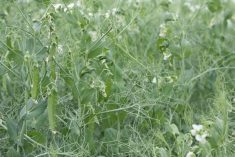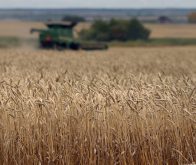Flax prices have fallen by half from a year ago but are still too high to be competitive on a global level, according to one flax processor.
Despite being touted as a heart-healthy food, demand for flax remains “fairly weak,” said Mike Popowich, vice president of TA Foods in Yorkton, Sask.
“The price is still too high for competitive bidding in the export markets,” said Popowich, who is also a director for the Saskatchewan Trade and Export Partnership, an association for exporters.
Read Also

Canola market sees up and down week
Canola futures endured a topsy-turvy week ended July 17, 2025, with most ICE contracts seeing net gains of about C$15 per tonne.
“There seems to be an excess on the market, which is weighing on prices and has been over the last couple of months.”
Flax has recently been selling for $17 to $17.50 a bushel. Those prices are well down from year-ago levels, which were $16 to $20 higher in February 2022.
Production rose last year by a third to 474,000 tonnes and AgCanada is forecasting production will rise slightly this year (to about 500,000 tonnes). But it will be tough selling any of that crop overseas in the face of cheaper flax from Kazakhstan (which produced around 2.5 million tonnes of flax last year) and Russia.
“They have a lot of flaxseed available to market at fairly low pricing to major buyers like China and now it’s going to turn Canadian flax into a domestic or North American commodity,” Popowich said. “That’s going to decrease prices and lead to lower overall demand.”
Russia will be able to find buyers despite its pariah status, Wayne Thompson, CEO of the Flax Council of Canada, recently said.
“Kazakhstan is supplying a lot of the European market and right now a lot of Russian flax would be supplying the Chinese demand,” Thompson said. “So that has definitely hindered Canadian exports to the European Union and Chinese market in the last year.”
The change in trade patterns has been occurring over several years, he added.
“For many years, Canadian flax had easier access to the Chinese market,” he said. “In recent years both Russian and Kazakhstan flax was limited as to what could be imported into China, but over the last three or four years those quotas have been increased so Russia and Kazakhstan are able to export more flax than they used to into the Chinese market.”
Ag Canada is forecasting that seeded flax area — the vast majority of which is in Saskatchewan — will increase to 865,000 acres this year (versus 778,000 in 2022). Popowich believes canola may still take away acres from flax.
“(Flax prices) are still fairly high, but they may be not as attractive as they might be with other commodities being attractive in price,” he said. “We should see another decline in acreage, but it’s hard to tell until things start happening on the production contract side in the market.”
Alberta has seen a little bump in flax acres recently. Last year, 129,000 acres were sown and the year before, Alberta producers seeded 123,000 acres. But during the past decade, acreage has been under 100,000 acres about half of the time.
Yield is also an issue. The recent Prairie average is only about 25 bushels an acre.



















